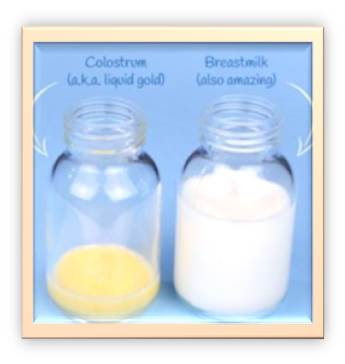milk and colostrum
milk definition :
physiological secretion of mammary glands of mammals females (which have offspring) after few days from parturition and it is top healthy nutritional food obtained from farm animals which is rich in protein, fats, carbohydrates, minerals and vitamins and ready for consumption.
milking animals :
as cow , she camel , ewe ,does ,buffalo
ewe and does : 2 quarters
cow : 4 quarters
she camel : 4 quarters in udder but 2 only secret milk
NB:each quarter has mammary gland and considers separated unit (if one quarter is damaged , others do their function)
udder anatomy :
alveoli ----> alveolus duct ---->cisternae ----> duct of cisternae ----> teat canal ---> teat orifice .
functional unit of udder is alveoli which is lined with secretory cells responsibling for milk formation.
milk formation or milking :
milking process stimulates alveoli to milk formation.
so ,when alveolus duct , cisternae and duct of cisternae are full of milk ---->milk formation stops
protein , fat , carbohydrates , minerals , vitamins and water are needed for milk formation.
protein presented in milk comes from blood toward endoplasmic reticulum for synthesis whey protein.
fats presented in milk , long chain fatty acid comes from blood while short chain fatty acid presented in secretory cells of alveoli .
carbohydrates presented in milk , glucose comes from blood while galactose forming inside secretory cells.
NB glucose and galactose together for synthesis lactose (milk sugar )
minerals and vitamins presented in milk comes from blood.
hormonal control of milk :
1- growth hormone or called somatotropine
increase size of mammary gland
2- adrenaline
increase secretion but stop milk formation in acute stress .
3- thyroid hormone
4- prolactin
secreted from anterior pituitary gland , help in develop alveoli , activity of secretory cells , amount of milk formed in seretory cells .
5- oxytocin
cause contraction of alveoli , alveolus canal , cisternae and teat .
milk composition :
water percent is 82% - 87%
total solids percent is 13 %
lactose represents 38.1 % from total solids
fat represents 29.4 % from total solids
casein (milk protein ) represents 22.2 % from total solids
minerals (ASH) represents 5.6 % from total solids
whey represents 4.8 % from total solids
nutritive value of milk :
1- milk contains high quality animal protein.
2-milk is rich in lactoferrin ( which has antibacterial effect ) .
3-milk is rich in immunoglobulin .
4-milk is source of energy
5-milk contains fat soluble vitamins A D E K .
6-milk contains water soluble vitamins .
NB she camel milk is rich in vitamin C .
does milk is rich in vitamin B complex .
7-ideal calcium - phosphorus balance in milk .
8-milk contains water and minerals .
NB
skimmed milk is milk without fat.
plasma of milk is milk without fat .
serum of milk is milk without fat and protein .
TS ===> refer to( total solids )
SNF===> refer to ( solid non fat )
chemical composition of milk :
cow milk contains
water ==> 87 %
fat ==> 4%
lactose ==> 5%
protein==.> 3.3 %
minerals==> .70 %
buffalo milk contains
water==>82 %
fat ==>7%
lactose=>5%
protein=>4%
minerals=>.79 %
factors affecting chemical composition of milk :
1- species of animal
camel milk is superior healthy food because it is full of anti cancer and anti diabetes mellitus .
2- stage of lactation
fat increases in milk by time of lactation .
3- breed
4- individual variation in the same breed.
5- time of lactation occurrence .
milk obtained from lactation in morning contains fat more than of that obtained from lactation in the evening.
6- seasonal variation
green feed which given to animal in specific seasons causes increasing in total solids and fat in milk.
7- age
fat in milk decreases with age because of damaging secretory cells in aged animals.
8- feeding
when animal is fed high energy ration (concentrates ) , fat increases in body and decreases in milk .
balanced ration increases milk production and milk quality partially .
9- diseases
some diseases causes decrease in lactose , protein and potassium and increase in sodium .
diseases affect sharply milk composition .
10- other factors
as change place and transportation .
colostrum definition :
secretion of mammary glands in female mammals directly after parturition which is yellowish and very rich in iron , antibodies , minerals , protien and total solid and lesser than milk in water , lactose and phosphorus .
the difference between milk and colostrum :
1- protien and minerals are in colostrum more than milk .
2- iron is in colostrum while it is absent in milk .
3- water , lactose and phosphorus are lesser in colostrum than milk .
NB colostrum is rich in protein to give high immunity .









No comments:
Post a Comment